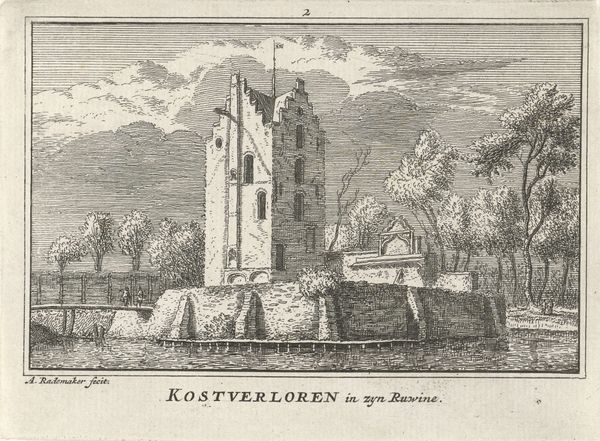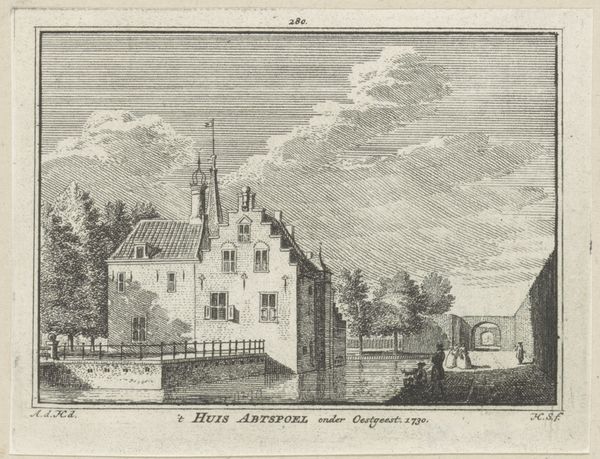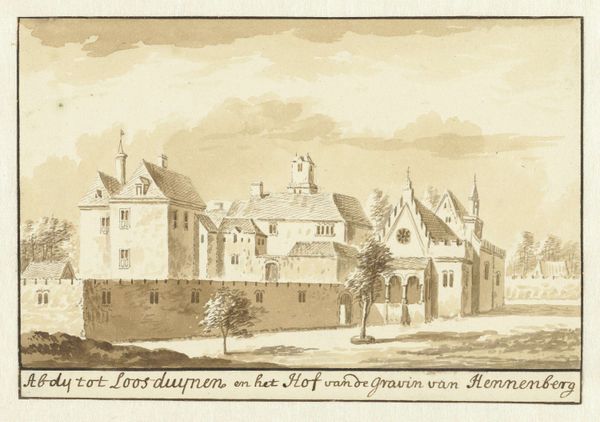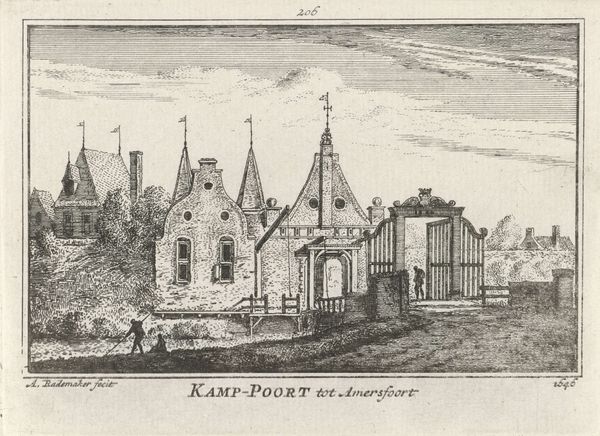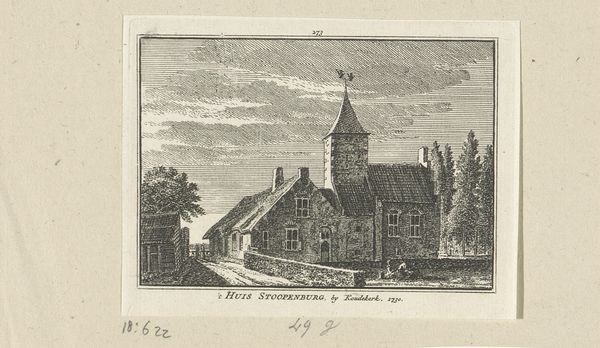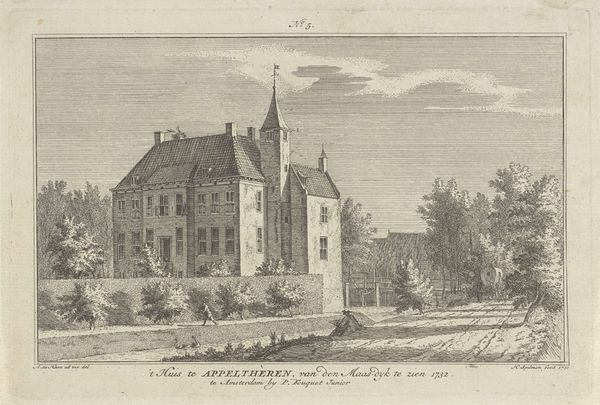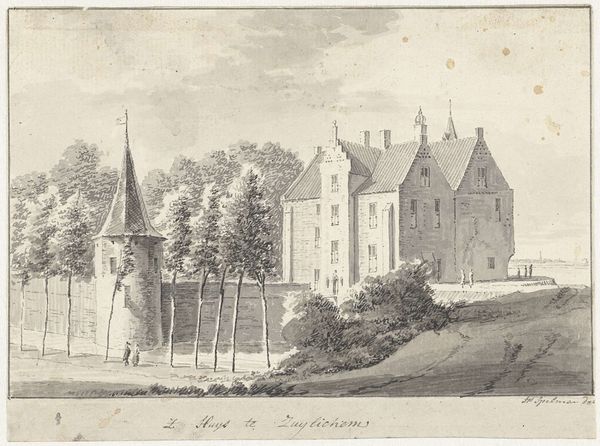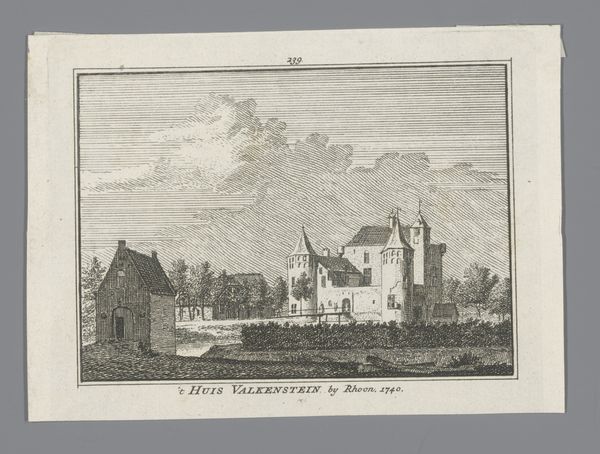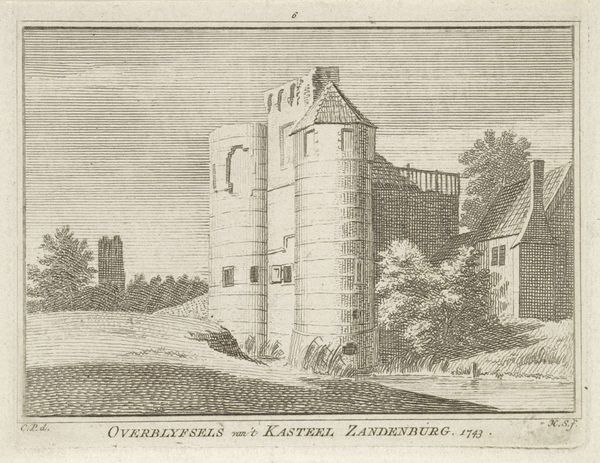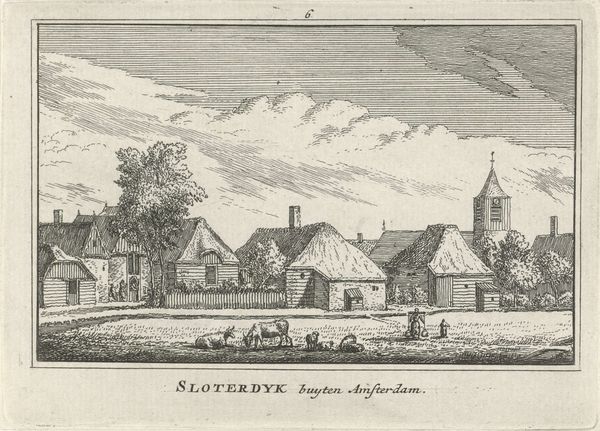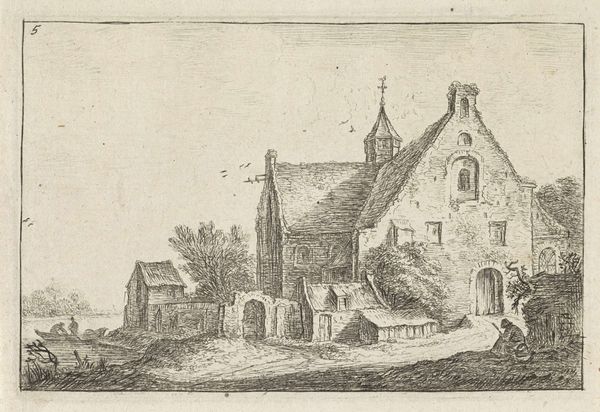
print, engraving
#
baroque
#
dutch-golden-age
# print
#
landscape
#
cityscape
#
engraving
Dimensions: height 80 mm, width 115 mm
Copyright: Rijks Museum: Open Domain
Editor: So, this is Abraham Rademaker's "Gezicht op Huis Kostverloren, 1630", made sometime between 1727 and 1733. It's an engraving, currently housed at the Rijksmuseum. It looks like a Dutch Golden Age landscape… very picturesque! The light is really striking for an engraving, I think. What do you see in this piece? Curator: Beyond its immediate aesthetic appeal, this image resonates with broader dialogues concerning land ownership and social structures of the Dutch Golden Age. Huis Kostverloren, meaning "lost costs," was a physical manifestation of wealth and power. How did this opulence contrast with the realities of everyday people who lived outside its walls? Editor: That's an interesting question. I guess I hadn't thought about the people *not* inside. Curator: Exactly! Consider how this representation, likely commissioned, reinforces a specific narrative about Dutch prosperity. We need to remember how landscape art like this could gloss over the exploitation that fuelled that prosperity, both at home and through colonialism. Who benefits from this representation of idyllic wealth, and whose stories are silenced? Editor: So, by idealizing the landscape and the estate, it's almost normalizing an uneven distribution of wealth? Curator: Precisely. We see the grand architecture, but what about the labour that sustained it? We might ask how images like this were consumed and what kind of national identity they were trying to cultivate. Editor: It's interesting to think about how even seemingly neutral landscapes are charged with social and political meanings. I never considered the role of the viewer, and whose stories were omitted. Curator: Right, understanding the context allows us to critically assess the narratives these images project and consider the power dynamics they reinforce. Editor: This has definitely given me a lot to think about regarding the intersection of art, wealth, and social commentary in this period. Curator: And hopefully, prompts us to continue questioning the role of art in shaping perceptions of the past and present.
Comments
No comments
Be the first to comment and join the conversation on the ultimate creative platform.
